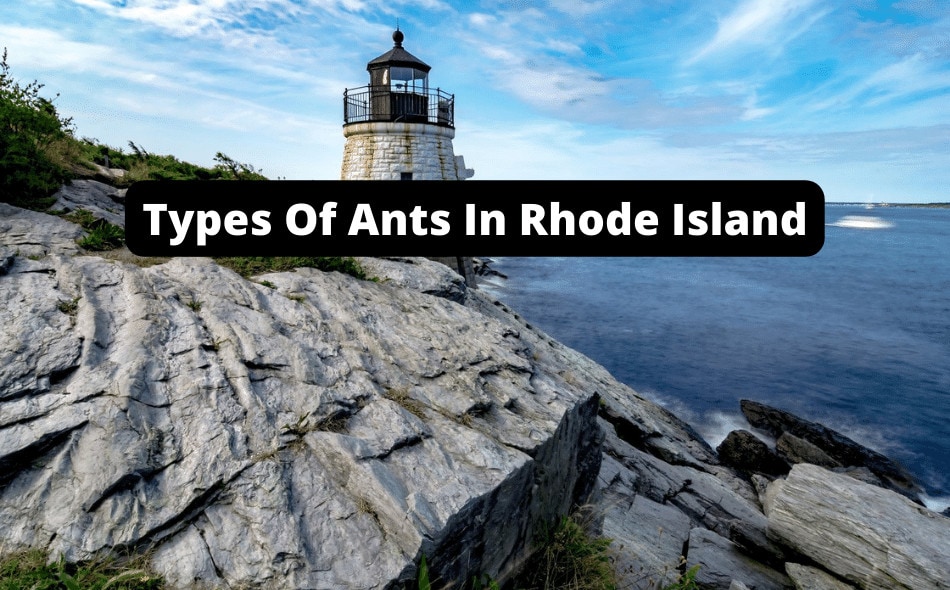Ants can be found almost everywhere in the world, but the type of ants will differ in each place.
Rhode Island, the smallest state in the United States, may be small in size, but it is big in character.
The state is known for its picturesque coastline, beautiful beaches, and charming colonial towns. While the state may not have the grandeur of the Grand Canyon or the Arizona desert, it has its own unique attractions.
The state is home to numerous historic landmarks, including the Newport Mansions, which feature some of the most breathtaking architecture in the country. Additionally, the state boasts a thriving food scene, with seafood being a particular specialty.
And let’s not forget the state’s official bird, the Rhode Island Red, which is a symbol of the state’s agricultural heritage.
Overall, Rhode Island may be small, but it packs a big punch when it comes to charm and character.
While all of this is nice, we can’t forget the cool ants that are in Rhode Island. These ants listed below would be perfect to start your ant-keeping journey, as they’re well-adjusted to Rhode Island’s humidity, water, and temperature!
Types of Ants In Rhode Island
Rhode Island isn’t shy when it comes to its ants. Rhode Island contains many ants, like Acorn Ants, African Big-headed Ants, American Mite-eating Ants, Asian Needle Ants, Bearded Carpenter Ants, Bent-spined Acorn Ants, Black Carpenter Ants, Carpenter Ants, Cherry Ants, Citronella Ants, Collared Ants, Fat Curltail Ants, Field Ants, Fiere Ants, Formicine Ants, Furrowed Monomorium, Hairless Rover Ants, Immigrant Pavement Ants, Lasiine Ants, Long-spined Acorn Ants, Mound Ants, Myrmicine Ants, Odorous House Ants, Pavement Ants, Pennsylvania Ants, Pitch-black Collared Ants, Ponerine Ants, Schaums Acorn Ants, Silky Field Ants, Silvery Field Ants, Sugar Ants, Thief Ants, Turfgrass Ants, Uncertain Field Ants, Winter Ants and Wood Ants.
American Mite-Eating Ant
The ant species, Myrmecina belongs to the Myrmicinae family. Over 53 species are spread over North America, northern Africa, Europe, eastern India, Korea, Australia, and Japan.
This genus is widespread throughout southern New Britain’s deciduous woodlands. Finding Myrmecina Americana larvae in these woods is easy while sifting through trash and dirt.
However, locating one or more members simultaneously takes a lot of work. Since the hunter-gatherers do not wander out onto open regions of the woods, the nests are difficult to find, and these individuals are rarely observed.
The acute carina located on either end of the dorsal border of the skull, among other traits, help differentiate the red-brown members of the species, Myrmecina from other species in the region.
These ants are commonly 6-8 mm long. Workers are predators who don’t often eat Homoptera.
Bent-Spined Acorn Ant
Acorn ants, also called Temnothorax curvispinosus, are tiny ants found all over North America.
These ants create little colonies of around 200 individuals with various colors.
Since this genus is polygynous, the nests may have several queens. Members of this genus can range in size from 2-4 mm, whereas queens are typically 4-5 mm.
Their habitats can be discovered in plant holes, such as hollowed branches, under the bark of live trees, inside reeds, branches, logs, walnuts, coconut shells, bug galls, puffballs, and even pine needles, as well as under stones or in-ground wooded environments.
The number of queens might change depending on the colony or the weather. Pleometrosis create new nests, and fresh queens are accepted from old nests. Eight ovarioles are present in fertile queens.
These ants transport and consume seeds. They also consume microscopic bugs and lateral nectaries of broadleaf ferns.
In addition, they consume aphids on the branches of woody plants, which do not appear attractive to insects.
Eastern Black Carpenter Ant
Black carpenter ants are known to leave pheromones (scent gland) traces as they seek food at considerable distances of upwards of 100 yards (91 meters) from their nest.
They must hunt this far away from their homes because so many ants can live in a single nest.
The worker’s loud crackling noise makes it possible to identify these huge nests even in the dark.
Although the black carpenters cannot cause extreme harm, the big workers may deliver a hurtful bite.
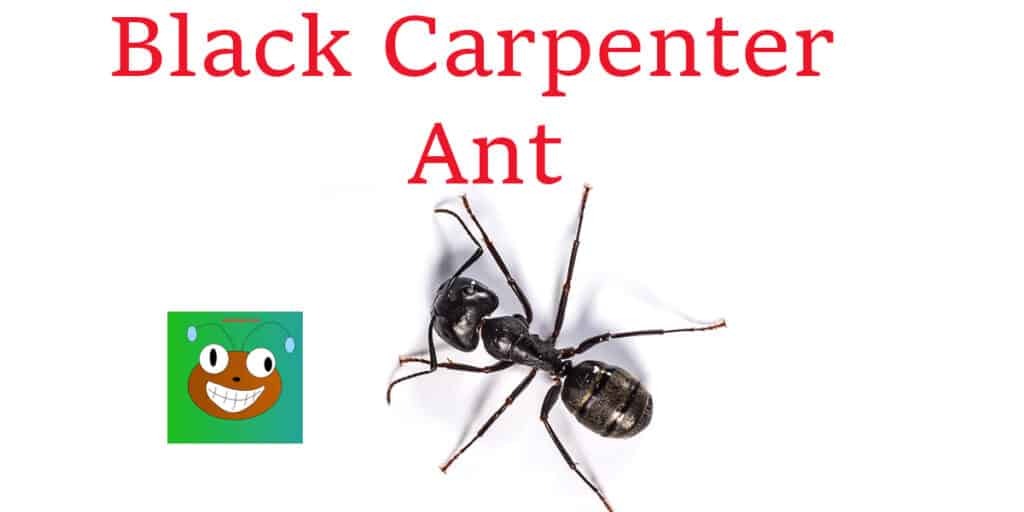
When biting, the black carpenter ant is known to spray formic acid, making the bite hurt just a bit more.
Aphids are cared for by worker carpenter ants, who raise them. In return, the aphids spit out honeydew that the black carpenter ant enjoys and brings back to the nest.
This isn’t all they eat; as foragers, they consume plant liquids and other bugs and insects.
Black Carpenter ants build their nests in tree stumps and other types of wood. While this does promote decomposition, which is advantageous for the environment, the overall structural damage that black carpenter ants cause is extensive.
These ants are known to build nests in homes and abandoned barns, creating havoc for home owners.
Carpenter Ant
Carpenter ants got their name because they dig wood to make their nests, creating neat tunnels within the wood.
These ants will only chew and burrow through the wood to build nests; Interestingly, they do not consume wood.
Depending on the species, Carpenter ants’ length ranges from 12 to 25 mm.

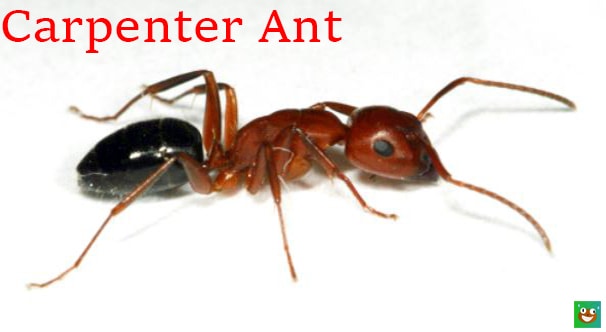
Carpenter ants that are black are frequent pests, but these insects can also be all-black, all-red, or all-brown.
When mature, the black western carpenter ants colony has ten to twenty thousand workers.
Incredibly, some big colonies have more than fifty thousand ants.
In most territories, there is only one active, wingless Queen. The colony must be older than two years before the production of swarmers takes place (potential new queens).
Instead, swarmers are produced the year before and kept in the nest during winter in preparation for the ensuing years’ dispersal.
In the east of the US, swarmers arrive from May through August, whereas in the west, they appear from February till June.
Citronella Ant
The hue of citronella ants ranges from yellow to yellowish-brown. Workers vary about an inch in length, and queens can reach lengths of a little more.
If seen from the front, their segmented bodies are irregularly rounded. Citronella ants get their name due to the lemon or citrus scent they release when squashed.

Citronella ants are mostly found at night and rarely spotted during the daytime.
Citronella ants build their nests outside in damp soil near a house s base, below concrete blocks, around logs, and under dead or rotting trees.
In addition, the ants will build their nests in homes with wet spots, such as behind bathroom walls and beneath kitchen and bathroom flooring.
Honeydew secreted by insects that dwell underground and eat plant roots is the primary food source for citronella workers.
As a result, they rarely, if ever, consume food from households.
Field Ant
The field ant is one of Wisconsin s most prevalent insects (Formica spp.). The ants are renowned for creating substantial mounds which destroy the beautiful appearance of many residential lawns.
Subsequently, cutting the grass is challenging and prevents the development of herb and woody ornamental plants.
Field ants are pretty big ants, with lengths between 1.5 and 3 inches.
Some species are entirely black, while others have either a black or red color. Their hue might change.
Colonies of field ants can last for over ten years. The queen lives in each nest and produces all the embryos that eventually become infertile females (workers) or males (drones).
They mostly gather food outside, consuming both living and dead bugs alongside aphid honeydew.
Field ants do not need to be controlled in places where there is no civilization, and usually dominate non-residential regions.
Hairless Rover Ant
The opportunistic nesting Brachymyrmex depilis species create tunnels under fallen logs, at the foot of growing plants, beneath stones, in the trash, along stems, and in the ground.
These ants quickly desiccate due to their tiny size and fragile structure, which causes colonies to congregate in locations with humid nesting chambers.

The hairless rover ant can be differentiated from other Northern America Brachymyrmex by color, ranging from gray to dark brown. The yellow ants are only one or two millimeters in length.
A hypothesized queen involves certain species; workers can be monomorphic and dimorphic.
The ants can be found in many settings, including open woodland, deep damp forest, meadows, and pastures.
The nesting chambers of a settlement of Brachymyrmex depilis can be discovered in the dirt behind rocks or decaying wood.
Their lives are spent nearly entirely underground. In underground tunnels, workers manage root aphids or coccids in addition to being common scavengers.
Long-Spined Acorn Ant
Small and brown, this ant has an 11-segmented transmitter and exceptionally well-developed propodeal spikes.
They build their nests in vegetation cavities like hollow branches, twigs, walnuts, brick walls, rocky clefts underneath the bark of dead, upright trees, and inside rotting logs; a typical nest population is around 50 workers (very low), with experimental highs seen of 419 and a total median of 136 (encompassing reproductive and brood activity).
It is worth noting that mid-July to early September is when mating flights take place. This species of ant hunts for food on the ground beneath trees.
Summertime and autumn are the busiest seasons for foraging. The ants are typically 2-4 mm in length. Depending on the habitat and season, the number of queens might change.
Only about 50% of the queens make it through the winter. Seven ovarioles are found in ovarian queens.
Workers mating does take place, and eggs produced by workers can produce male offspring.
Two ovarioles are present in reproducing workers
Mound Ant
Another ant species indigenous to the Atlantic region of North America is the mound ant.
Their range stretches from areas of Georgia through Nova Scotia. This mound ant creates sizable nests like other species, but these nests are some of the biggest in America.
In addition to building mounds, mound ants are pests because they destroy the plant life 40 – 50 feet from the nests.
Formica species, which produce formic acid, can be distinguished by their citrus flavor. The acid kills smaller trees and bushes that the ants pump into the nearby plants.
The red-orange coloring of the mound ant’s skull, abdomen, and gaster contrast sharply with their dark gaster.
The workers vary in size from 3.2 to 6.3 mm, and their Mounds are usually well-connected. The tubes can reach 3 feet below the surface, with a height of 4 feet above the ridge.
For eggs, the mound functions as a sun incubator. It requires 2.5 – 3 months for an egg to mature into an adult.
They gather aphid honeydew and seek a variety of arthropods for protein.
Odorous House Ant
The worker-odorous house ants are around 3mm long and black to dark brown.
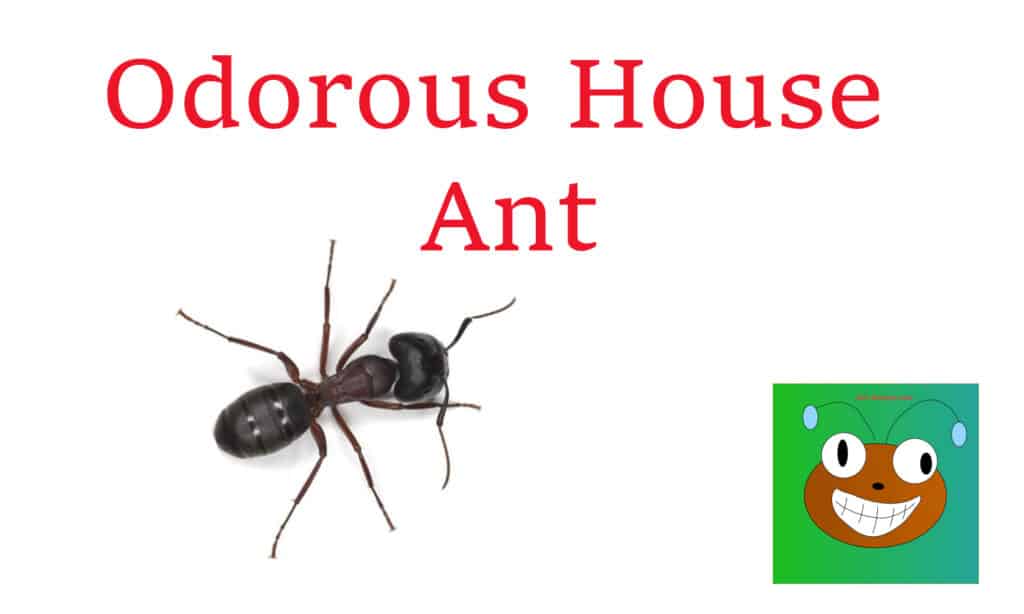
Additionally, they have antennae that resemble a long stick.
Crushed, odorous house ants produce a pungent, rotten coconut-like stench that gives these insects their name.
Odorous house ants build their nests indoors next to moist areas, such as heaters, heater cavities along hot water pipes, under leaking fixtures, and on termite-damaged wood.
Outside, odorous ants are frequently discovered on bare soil or beneath firewood piles. Odorous house ants enjoy eating sweets and particularly enjoy consuming honeydew.
Occasionally, they eat other things, such as pet food or insects. Approximately tri-monthly, they often relocate their nests because of rain.
They create new colonies following mating flights at the end of spring and summer.
Colonies are also split by the budding process, in which a queen leaves her nest with some workers to start a new colony elsewhere.
Pavement Ant
The head and thorax of pavement ants are marked with grooves, the thorax being the only part of the body-bearing spines.
Their size is usually between 2.5 and 3 mm in length.
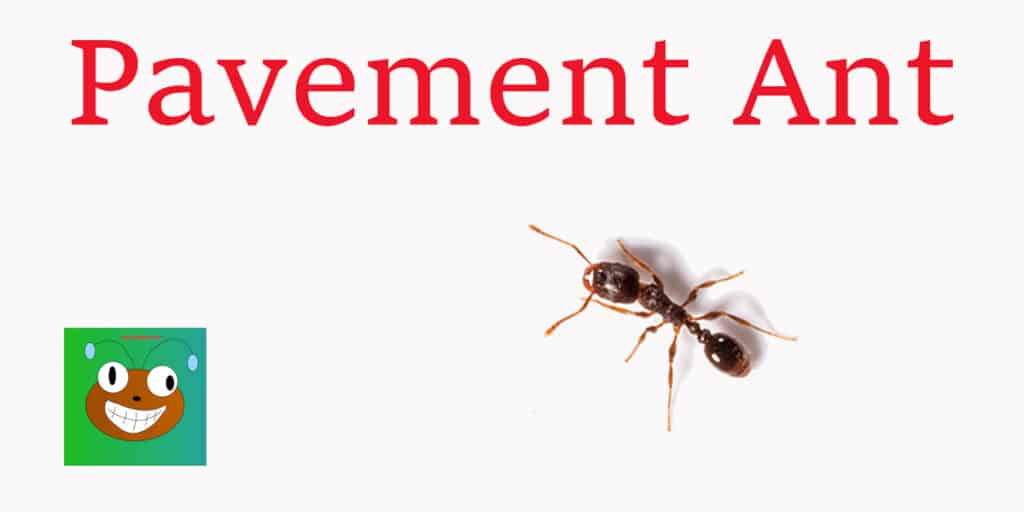
Pavement ants get their name because they typically make their nests under roadways, building foundations, and sidewalks.
Therefore, an area of disturbed soil near a paved surface is likely the result of pavement ant activity. Pavement ants may build their nests inside buildings near a heat source, mainly during winter.
These trailing ants consume many items, including honeydew from aphids, oily foods, seeds, and dead insects. Pavement ant colonies include up to 4,000 workers comprising several queens.
The queens are much bigger than the workers, going upwards of 9 mm in length.
The drones and young queens searching for partners are frequently spotted on nuptial flights during the end of spring and the start of summer. Drones and queens that reproduce have wings.
Pitch-Black Collared Ant
The pitch-black collared ant is a typical ant located in an expanse of woodland environments in the eastern States.
Aphaenogaster Picea and Aphaenogaster Rudis have numerous physical and biological similarities, making them close relatives.
The Aphaenogaster Picea isn’t entirely black, unlike their English title would suggest.
In reality, the Aphaenogaster picea comes in various deep red, brown, or even black tints, such as the Aphaenogaster occidentalis and the Aphaenogaster rudis.
The queens are typically 7mm or 8mm in size, whereas the workers are typically 4mm – 6mm.
Some well-fed queens can measure 11mm – 13mm in length.
These ants serve as a habitat for other ants and are the favored food of the Eastern Ruby Salamander.
These ants can expand more quickly if they receive consistent protein from bugs.
They eat various foods, such as plants, grapes, and different kinds of bugs.
If you give them anything that can absorb liquids, such as cotton and tissues, the individuals will use those items to collect the fluid and bring it up to the nests.
Silky Field Ant
Field ants have a longer bodies, ranging from 3 to 9 mm, and could be any hue, including pale yellowish, dark brown, black, or even a mix.
Their spines are segmented, and the top sides of their spines have an irregularly rounded shape.
Depending on traits, field ants are sometimes mistaken for carpenter ants. The piles of soil and other items they produce when building their nests might also be mistaken for fire ant activity.
Field ants eat honeydew and obtain this delicious material from pests such as beetles and caterpillars.
These ants consume a variety of insects. Aphids are discovered on shrubs, and workers raise aphid herds to ensure a steady honey supply.
Uniquely, beef can attract certain field ants. Foragers include a variety of field insect species. The larvae’s distinct movement is the most visible indicator of a field ant invasion.
Silvery Field Ant
The Sahara Desert is home to the Saharan silvery ant.
However, these ants have made their way to some drier areas in North America.
These ants are roughly 0.83 cm in length.
They are slender workers and warriors with enormous skulls and broadsword mandibles that may be seen in the nests of the silvery ant.
Workers and soldiers have a metallic shine in direct sunlight, supporting the species’ colloquial name. Many people refer to the Saharan silvery ant as an ant inside a silvery space suit because of its silver body.
Saharan silvery ants consume the dead bodies of mammals in the desert. Within the scorching Sahara Desert, such animals typically perish.
These ants are only active (beyond their colony) for around ten minutes every day, primarily because of the extreme temperatures in their environments and the danger of predators.
Because these ants navigate by watching the sun’s direction, they can always understand the shortest path back to the colony and spend as little time as possible in the sunlight.
Sugar Ant
The wide varieties of banded sugar ants range in size from 4 – 16 millimeters, making them a very broad and vast species.
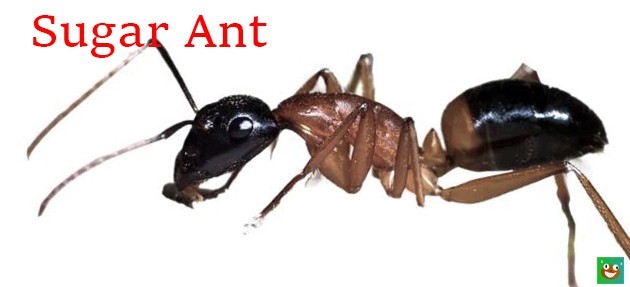
There are two prominent members in the nests of banded sugar ants – small workers and big workers.
Sugar ants mate in the fall and spring, during these time periods, you can frequently see winged sugar ants buzzing in the sky.
Adults will breed while flying, as well as receptive females (queens). Following mating, the males soon pass away, and the queen goes off to create her own nest.
Banded sugar ants enjoy insects that consume plants, like aphids, and drink the secretions they produce.
For example, the aphid’s rectum has honeydew fluids, which are then given to the larvae and Queen.
Nests can be discovered in several places, such as cracks in wood, soil biota, trees and shrub branches, spaces between hills, in the ground, and beneath paving slabs.
Thief Ant
Among the tiniest species of domestic ants is the thief ant. They received their name because they tend to build their nests near or inside those of other ant colonies, which they subsequently raid for food and eggs.
Although they can have numerous queens and thousands of workers, their colonies are typically smaller than other ant species.
While they have different traits, thief ants and pharaoh ants can frequently be mistaken.
Due to their preference for fatty meals and sweet delights, these ants are sometimes called grease ants or sugar ants.
The majority of the Eastern US is home to this species.
The bodies of thief ants range in color from light brown to pale yellow. They are usually 1.5 mm – 2.2 mm in size. Their body is irregularly shaped, with their thorax appearing to lack spines. But their waist comprises two nodes.
Turfgrass Ant
Turfgrass ants have a single point on the peduncle, the root structure connecting the stomach to the thoracic.
They are around 1/8 inch in length and dark red in appearance. Most of their nesting is constructed in the top part of the ground, with a distinctive mound concealing the openings.
The colony of every nest opening, encircled by the irregular crater-like circles of dug-up earth, may have multiple entrances.
These mounds can range in size from two to five inches. The pavement ant, sometimes called the turfgrass ant, is frequently observed on bright, well-drained grass fields in lawns, playgrounds, and golf resorts.
These ants build tiny chambered nests linked to one another and are often located in the top 12 inches of soil.
Turfgrass ants can be seen searching for food inside.
After making it through the winter, the existing and newly formed turfgrass ants start up again in late April.
By the middle of the summer, more mounds are being created. This denotes the entrance of additional adult laborers.
Finally, late summer or early fall sees the development of the young into flying females and males as matured turfgrass ant species.
Uncertain Field Ant
The Uncertain Field Ant is an ant genus discovered throughout eastern North America.
These ants have some chaetae upon the mesosoma around the tip. Although F. incerta is less shiny and has a lighter hue than F. pallidefulva, there is still a lot of variation between clusters and single specimens.
Their three dark dots upon that queen’s abdomen help to differentiate them from a queen of another species.
Like most ants, the queen is a bit bigger than the rest of the workforce.
These ants may be seen in sparse forests, forest trails, prairies, playgrounds, meadows, and highway verges.
However, they prefer grassland, fields, and hedgerows.
Thousands upon thousands of ants live in a nest with their eggs, larvae, and adults, ranging range from 6-9mm.
F. incerta consumes various foods, and their foragers hunt for nectar from extrafloral calyx on plants, including partridge beans and sunflowers.
Additionally, they collect honey from insects and grasshoppers and guard their food supply against parasitoids, ants that are not nestmates, and other insect species.
